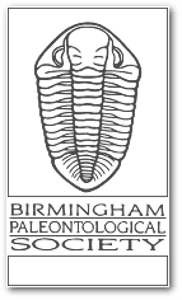Visitor
Science Daily - Fossils

Paleontology and fossil records. Read about fossil finds over the last 10 years starting with the most recent research. Full text, photos.
Updated: 2 hours 25 min ago
Prehistoric rhinos lived in super-herds
Rhinos that flourished across much of North America 12 million years ago gathered in huge herds, according to a new study.
Categories: Fossils
Mammoth genetic diversity throughout the last million years
A new genomic study has uncovered long-lost genetic diversity in mammoth lineages spanning over a million years, providing new insights into the evolutionary history of these animals.
Categories: Fossils
Dinosaurs' apparent decline prior to asteroid may be due to poor fossil record
The idea that dinosaurs were already in decline before an asteroid wiped most of them out 66 million years ago may be explained by a worsening fossil record from that time rather than a genuine dwindling of dinosaur species, suggests a new study.
Categories: Fossils
Machine learning helps construct an evolutionary timeline of bacteria
Scientists have helped to construct a detailed timeline for bacterial evolution, suggesting some bacteria used oxygen long before evolving the ability to produce it through photosynthesis.
Categories: Fossils
Ancient amphibians as big as alligators died in mass mortality event in Triassic Wyoming
Dozens of amphibians perished together on an ancient floodplain around 230 million years ago, according to a new study.
Categories: Fossils
Footprints reveal prehistoric Scottish lagoons were stomping grounds for giant Jurassic dinosaurs
Jurassic dinosaurs milled about ancient Scottish lagoons, leaving up to 131 footprints at a newly discovered stomping ground on the Isle of Skye in Scotland, according to a new study.
Categories: Fossils
Mammals were adapting from life in the trees to living on the ground before dinosaur-killing asteroid
More mammals were living on the ground several million years before the mass extinction event that wiped out the dinosaurs, new research has revealed.
Categories: Fossils
New species revealed after 25 years of study on 'inside out' fossil -- and named after discoverer's mum
A new species of fossil is 444 million years-old with soft insides perfectly preserved. Research 'ultramarathon' saw palaeontologist puzzled by bizarre fossil for 25 years.
Categories: Fossils
Genetic study reveals hidden chapter in human evolution
Modern humans descended from not one, but at least two ancestral populations that drifted apart and later reconnected, long before modern humans spread across the globe.
Categories: Fossils
New fossil discovery reveals how volcanic deposits can preserve the microscopic details of animal tissues
An analysis of a 30,000-year-old fossil vulture from Central Italy has revealed for the first time that volcanic rock can preserve microscopic details in feathers -- the first ever record of such a preservation. An international team discovered a new mode of preservation of soft tissues that can occur when animals are buried in ash-rich volcanic sediments. The new research reveals that the feathers are preserved in a mineral phase called zeolite, a mode of preservation of soft tissues never reported before.
Categories: Fossils
Dozens of 3-toed dinosaurs leave their mark in Australia
A researcher has confirmed a boulder at a regional school contains one of the highest concentrations of dinosaur footprints per square meter ever documented in Australia.
Categories: Fossils
World's oldest impact crater found, rewriting Earth's ancient history
Researchers have discovered the world's oldest known meteorite impact crater, which could significantly redefine our understanding of the origins of life and how our planet was shaped. The team found evidence of a major meteorite impact 3.5 billion years ago.
Categories: Fossils
Plants struggled for millions of years after the world's worst climate catastrophe
Scientists have uncovered how plants responded to catastrophic climate changes 250 million years ago. Their findings reveal the long, drawn-out process of ecosystem recovery following one of the most extreme periods of warming in Earth's history: the 'End-Permian Event'.
Categories: Fossils
Prehistoric bone tool 'factory' hints at early development of abstract reasoning in human ancestors
The oldest collection of mass-produced prehistoric bone tools reveal that human ancestors were likely capable of more advanced abstract reasoning one million years earlier than thought, finds a new study.
Categories: Fossils
Humans inherited their flexible joints from the earliest jawed fish
The efficient architecture of our joints, which allows our skeletons to be flexible and sturdy, originated among our most ancient jawed fish ancestors, according to a new study.
Categories: Fossils
Giant ice bulldozers: How ancient glaciers helped life evolve
New research has revealed how massive ancient glaciers acted like giant bulldozers, reshaping Earth's surface and paving the way for complex life to flourish. By chemically analyzing crystals in ancient rocks, the researchers discovered that as glaciers carved through the landscape, they scraped deep into the Earth's crust, releasing key minerals that altered ocean chemistry. This process had a profound impact on our planet's composition, creating conditions that allowed complex life to evolve.
Categories: Fossils
New study reveals Neanderthals experienced population crash 110,000 years ago
A new study suggests that Neanderthals experienced a dramatic loss of genetic variation during the course of their evolution, foreshadowing their eventual extinction. Examination of semicircular canals of ear shows Neanderthals experienced 'bottleneck' event where physical and genetic variation was lost.
Categories: Fossils
Near-complete skull discovery reveals 'top apex', leopard-sized 'fearsome' carnivore
A rare discovery of a nearly complete skull in the Egyptian desert has led scientists to the 'dream' revelation of a new 30-million-year-old species of the ancient apex predatory carnivore, Hyaenodonta.
Categories: Fossils
Ancient Egyptian mummified bodies smell 'woody,' 'spicy' and 'sweet'
Ancient Egyptian mummified bodies smell 'woody,' 'spicy' and 'sweet', finds a new study, revealing new details about mumification practices.
Categories: Fossils
Underwater fossil bed discovered by collectors preserves rare slice of Florida's past
Fossil collectors in Florida have discovered an ancient sinkhole, now at the bottom of a river, which holds the remains of animals rarely seen in the state, including a type of giant armadillo, giant ground sloths and an odd-looking tapir.
Categories: Fossils
